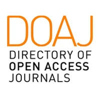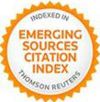Multimedia Communication Strategies for Environmental Sustainability: a Didactic Experience for Promoting NGOs 
Abstract
In the last years multimedia strategies have played a significant role in communicating environmental sustainability policies aimed at affecting changes on a local, regional, and global scale. This article would like to stress the use of animation as a successful multimedia communication tool for promoting responsible consumer choices and sustainable production methods. After a quick overview on the issue of sustainable consumption and production behaviors and the description of relevant examples of animated campaigns produced for supporting organizations, the article reports a didactic experience and describes animated artifacts designed by students to promote the Italian project SfruttaZero, that engages migrants and precarious farmers in the production of local products with the multiple aim to build a fair working environment and to foster a culture of sustainable consumption.
Keywords
Full Text:
PDFDOI: http://dx.doi.org/10.2423/i22394303v14n1p147
References
Alam, N. (2022). Narrative Strategies for Animated Development Communication. Examples From BRAC in Bangladesh. In G. Sorce (Ed.), Global Perspectives on NGO Communication for Social Change (pp. 90-105). London, UK: Routledge Research in Communication Studies.
Barab, S., Thomas, M. & Merrill, H. (2001). Online Learning: From information Dissemination to Fostering Collaboration. Journal of Interactive Learning Research 12, 105–143.
Bernocchi, R. (2008). I linguaggi della pubblicità sociale: alla ricerca dell’efficacia. In C. Bertolo (Ed.) Comunicazioni sociali. Ambiguità, nodi e prospettive (pp. 165-186). Padua: Cleup.
Bruner, J. (1966). Toward a Theory of Instruction. Cambridge, MA: Harvard University Press.
Ceccarelli, N. (2012). Historical perspective of animation in documentary film. In C. Turri (Ed.), IP Informanimation 2011. Research, education and design experiences (pp. 118-122). Milan, IT: FrancoAngeli.
Corrado A., Caruso, F., Cascio M., Nori M., Palumbo L., & Triandafyllidou A. (2018). Is Italian agriculture a ‘pull factor’ for irregular migration – and, if so, why?. Open Society European Policy Institute. DOI:10.13140/RG.2.2.34305.92000
Dewey, J. (2014). Esperienza e educazione (E. Codignola, Trans.). Milan, IT: Raffaello Cortina editore.
Gabardi, E. (2011). Social advertising. Campagne pubblicitarie per un mondo migliore. Milan, IT: FrancoAngeli.
Green, M.C., Strange, J.J. & Brock, T.C. (2002). Narrative impact: Social and cognitive foundations. Mahwah, NJ: Lawrence Erlbaum Associates Publishers.
Heller, S. & Dooley, M. (2008). Teaching Motion Design. Course Offering and Class Projects from the Leading Undergraduate and Graduate Programs. New York, NY: Allworth Press.
Heller, S. & Vienne, V. (Eds.) (2003). Citizen Designer: Perspectives on Design Responsibility. New York, NY: Allworth Press.
Honess Roe, A. (2013). Animated Documentary. London, UK: Palgrave Macmillan.
Jenett, D. (2014). Motion Design. Hamburg, DE: Gudberg Nerger.
Kalantaryan, S., Scipioni, M., Natale, F. & Alessandrini, A., (2021). Immigration and integration in rural areas and the agricultural sector: An EU perspective. Journal of Rural Studies 88, 462–472. DOI: 10.1016/j.jrurstud.2021.04.017
Kiss, K., Ruszkai, C. &Takács-György, K. (2019). Examination of Short Supply Chains Based on Circular Economy and Sustainability Aspects. Resources 8 (161), 1-21. DOI: 10.3390/resources8040161
Krasner, J. (2013). Motion Graphic Design: Applied History and Aesthetics. Abingdon, UK: Taylor and Francis Group.
Manzini, E. (2015). Design, When Everybody Designs: An Introduction to Design for Social Innovation. Cambridge, MA: MIT Press.
Maselli, V. & Panadisi, G. (2019). Progettare come ricerca. La ricerca attraverso gli strumenti del motion design. AND Rivista di architetture, città e architetti 35, 76–83.
Maselli, V. & Panadisi, G. (2021). Motion Design Teaching Strategy: Between Theory, Practice, Technology, and Distance Learning. Design Principles and Practices: An International Journal—Annual Review 15(1), 19-31. DOI:10.18848/1833-1874/CGP/v15i01/19-31.
Normoyle, C. (2019). A Blended Perspective: Social Impact Assessment in Graphic Design. Dialectic 2(2), 71-94. Published by the AIGA Design Educators Community (DEC) and Michigan Publishing. DOI: 10.3998/dialectic.14932326.0002.205
Our World in Data team (2023). Ensure sustainable consumption and production patterns. OurWorldInData.org. Retrieved from https://ourworldindata.org/sdgs/responsible-consumption-production
Palumbo, L., Corrado, A., & Triandafyllidou, A. (2022). Migrant Labour in the Agri-Food System in Europe: Unpacking the Social and Legal Factors of Exploitation. European Journal of Migration and Law 24(2), 179-192. DOI: 10.1163/15718166-12340125
Papanek, V. (1971). Design for the real world. London, UK: Thames & Hudson.
Piscitelli D. (2019). First Things First. Comunicare le emergenze. Barcelona, ES: ListLab Editore.
Shaw, A. (2016). Design for Motion: Fundamentals and Techniques of Motion Design. Boca Raton, FL: CRC Press.
Shearer, R. L., Aldemir, T., Hitchcock, J., Resig, J., Driver, J. & Kohler, M. (2020). What Students Want: A Vision of a Future Online Learning Experience Grounded in Distance Education Theory. American Journal of Distance Education 34(1), 36-52. DOI: 10.1080/08923647.2019.1706019.
Shetabi, L. (2015). Heritage Conservation and Environmental Sustainability: Revisiting the Evaluation Criteria for Built Heritage. In Proceedings of the Australia ICOMOS Conference–Fabric: Threads of Conservation (pp. 2–21), Adelaide, Australia. DOI: 10.13140/RG.2.1.4265.6086.
Still, J. (2014). Five Greenpeace campaigns against companies: Lego, Barbie and Shell. Guardian sustainable business blog. Theguardian.com. Retrieved from https://www.theguardian.com/sustainable-business/blog/greenpeace-campaigns-companies-lego-mattel-barbie-shell
Stone, B. & Leah Wahlin, L. (2019). The Theory and Practice of Motion Design: Critical Perspectives and Professional Practice. London, UK: Routledge.
UN environment programme (2020). Sustainable consumption and production policies. Unep.org. Retrieved from https://www.unep.org/explore-topics/resource-efficiency/what-we-do/sustainable-consumption-and-production-policies
United Nations (2020). The UN Agenda 2030 for Sustainable Development. Retrieved from https://www.un.org/sustainabledevelopment/
United Nations (2020). Sustainable consumption and production. Retrieved from https://sdgs.un.org/topics/sustainable-consumption-and-production
Waters, R.D. & Jones, P.M. (2011). Using video to build an organization’s identity and brand: A content analysis of nonprofit organizations’ YouTube videos. Journal of Nonprofit & Public Sector Marketing 23(3), 248–268. DOI:10.1080/10495142.20
Article Metrics
Metrics powered by PLOS ALM
Refbacks
- There are currently no refbacks.
Copyright (c) 2024 Giulia Panadisi, Vincenzo Maselli

This work is licensed under a Creative Commons Attribution-NonCommercial-NoDerivatives 4.0 International License.
SCIRES-IT, e-ISSN 2239-4303
Journal founded by Virginia Valzano




